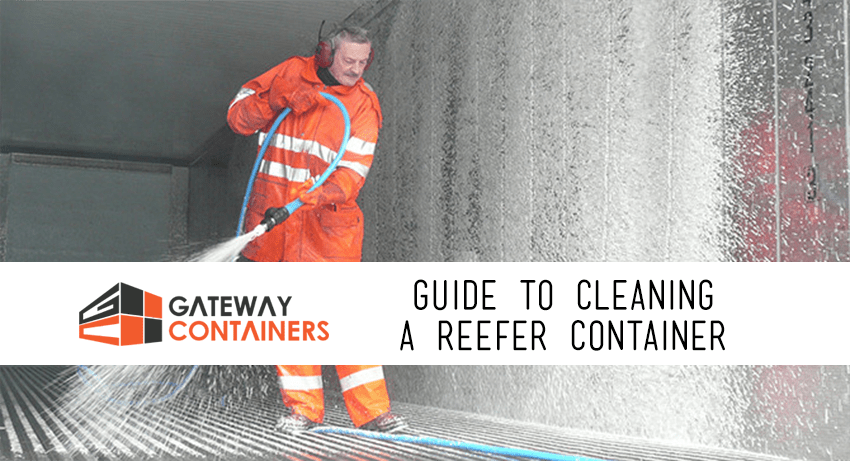Refrigerated shipping containers can end up carrying all kinds of goods, more often than not these can include food products, while at other times they are used as temporary fridges at concerts, sporting events or warehouses.
As with anything that is used to store fresh or perishable food products, it’s of the utmost importance to ensure that your reefer is squeaky clean to prevent cross contamination between different cargoes that you are either storing or transporting.
International Shipping Line Maersk describes three different stages of cleanliness when it comes to cleaning reefer style shipping containers in their white paper “Food Safety – Keeping It Clean”:
- Physically Clean: The most basic level of cleanliness, where all surfaces on the second hand shipping container appear clean to the eye.
- Chemically Clean: The next step, where the container is cleaned to such a state where the surfaces are free of any residue where microorganisms can grow.
- Microbiologically Clean: This is as clean as it gets, where the surfaces are completely free of any types of organism or environment where they can exist.
Maersk’s Global Cleaning Guidelines give you a good idea of the standard of cleanliness that is required of containers:
- The interior and exterior should be free of labels, marks and signs, especially those that say ‘dangerous’
- Graffiti should be removed, either through painting or scrubbing
- Soil, sand, mud and loose dirt should be removed, washed and steam cleaned
- Glue should be removed
- All infestations should be removed and steam cleaned
- Container should be washed, steam cleaned and ventilated to remove odours
- All standing water needs to be removed
- All organic materials such as blood, fish, meat, grains and seeds need to be removed and container washed or steam cleaned thoroughly.

How to clean the interior of your reefer:
1. Sweep your reefer container with a broom to remove any mess that might have accumulated that can be removed quickly and easily.
2. Vacuum clean the container to remove anything that is not picked up through sweeping using an industrial vacuum cleaner.
3. Use a high pressure hose with either hot or cold water to remove all dust and dirt that is visible on the interior with the naked eye. (Make sure that you avoid cleaning near any electrical supplies, to avoid the potential of shock, electrocution or burns). One the interior is clean, take the pressure hose outside and give the exterior a good spray to remove any loose dirt or grime from the outside. Any loose paint or corrosion should be removed at this stage as well.
4. Use soap and other chemical disinfectants before scrubbing and rinsing with cold water and disposing of the grey water in an environmentally friendly way. The chemicals that you utilise need to be strong enough to cut through grime, dirt and kill microorganisms, while at the same time not damaging the reefer or the planet. Those who are looking for a simpler cleaning solution might instead choose to use a combination of baking soda, vinegar and ammonia. You’ll want to wear the appropriate safety equipment, especially eye protection.
5. Rinse the interior of the container
6. Steam clean the the interior of the container.
7. Use solvents to remove anything that has not been removed via previous cleaning methods.
8. Remove the grille and remove any residue buildup that might have occurred. Remove the water pan and get rid of dirty water that is trapped inside.
9. Some containers may have an unpleasant smell accumulated from previous cargo. Simple ways to remove smells include using common absorbent materials such as charcoal or coffee in a container for a few days.
10. Replace any components and make any repairs as necessary. Now is the time to patch up any rusty areas, holes or dents in the container. Sand the exterior of the container, prime then paint. By now your container should be almost as good as new!
Of course, if you are cleaning on a large scale, you might want to invest in a specialised Reefer Container cleaner, such as those produced by companies like Snap Solutions. Industrial robots can also do the job using ice blasting technology which, since it is water free, requires no downtime for drying. The robot in the video below can clean a 20 ft reefer container in 12 minutes.
Are you looking for quality clean containers?

Looking for high quality second hand reefer containers that don’t need major cleaning or an overhaul? Contact the team of container experts at Gateway Container Sales and we’ll find the perfect container for your individual needs. Regardless of whether it’s a standard 20 foot cargo container or a clean and shiny reefer, we’ve got what you need!




